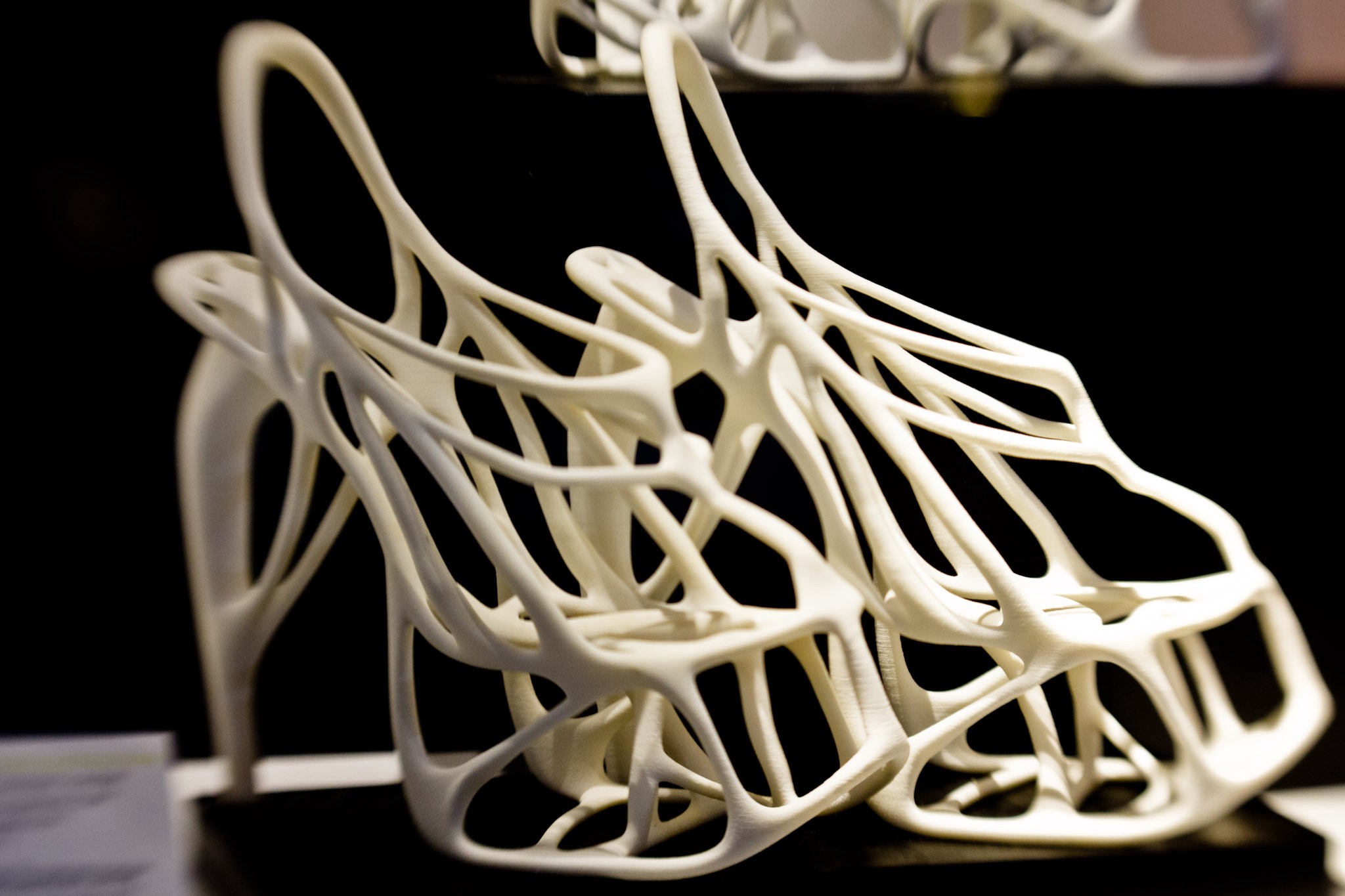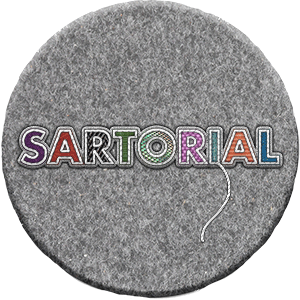

We’re being sold the idea of 3D-printed clothing that shows off a new kind of technical achievement and dazzling aesthetics. And bits of human bodies–female bodies.
A long, black dress is draped across the shapely form of model Dita von Teese. An impressively detailed, articulating gown, it was designed by Francis Bitoni in collaboration with Michael Schmidt Studios and 3D printing platform Shapeways. The dress is technically masterful. And while the image was clearly developed to highlight advanced technique, it also capitalizes on von Teese’s experience as a burlesque celebrity, mapping not just her anatomical curves but showing much of what is underneath as well. The broad mesh of the 3D print, partially an accommodation of the technology itself and cost of production, also revealed flesh.
The sparseness of “Dita’s Gown” was not a one-off.
Artist and researcher Matthew Plummer-Ferdandez’s “Women Wearin’ 3D Prints,” created several years ago and loosely maintained, catalogs a parade of peekaboo designs. From the highly metaphorical to the frankly frightening, it features more than a few items suggestive of domination-gear: odd grill-masks, body armor and neo-medieval greaves–ones that make the model look more captive than in control. Perhaps even more direct, there is the odd trope of the model’s delicate foot jammed into a 3D printer.
A woman’s form has long been used to demonstrate new iterations of material art and design, as well as fashion. Using shock and seduction alike to draw attention to craft is so commonplace that it’s actually fairly boring. For better or worse, we’ve become inured to this approach on the catwalk, on billboards and in glossy magazines. But in this emerging field around additive manufacturing–a most unsexy name for 3D printing–positioning women’s bodies as something to be contained within a mechanistic creation currently ranges somewhere between a repetitive crutch and boldfaced subjugation.
At least one design project has made this trend a theme, using the nakedness metaphor to make a point about vulnerability of personal data, employing a barely clad female model to illustrate the idea.
It’s clear that 3D-printing entrepreneurs are keen to make their story more than just one of manufacturing, hence the panoply of other attention-grabbing objets d’art, from printed skulls and more spare chess pieces than society may ever need, to an unsettling range of functioning weapons.
Still, there are some amazing stories of innovation happening in the world of 3D printing, particularly around more intricate applications of computing to achieve biomimetic shapes; subtle, articulating folds; and even responsive designs that change shape or structure based on environment or situation. And there are plenty of discussions about what these applications might do: for example, enabling customized apparel for people with non-normative body types or differing abilities, customized prosthetics or something else entirely (which is up to us to find).
Given the nature of the technology’s capabilities and constraints, lattice-like, see-through structures are going to be somewhat common–after all, additive manufacturing is, in part, about creating structure and leaving out the unnecessary. But if we want this promising technology to go far, perhaps we can get beyond the trope of the scantily clad model in micro-jointed bikinis?
Now is the time to open public debate around what 3D printing could offer, lest it drift into the dreaded culture of tech-conference booth bunnies or the hackneyed vision of finding personal information about your potential hot date.
After all, innovation is for everyone, not just the person with the key to the menacing cage-dress. A lot of people are watching the progress of 3D-printing technology. Rethinking how we choose to demonstrate it, and on whom we display it, will make a difference in how inclusive this impressive new field of innovation can be.


How We Get To Next was a magazine that explored the future of science, technology, and culture from 2014 to 2019. This article is part of our Sartorial section, which looks at the impact of science and technology on how we present ourselves to each other. Click the logo to read more.
